Potrebujeme váš súhlas na využitie jednotlivých dát, aby sa vám okrem iného mohli ukazovať informácie týkajúce sa vašich záujmov. Súhlas udelíte kliknutím na tlačidlo „OK“.
ASTM E1790-04(2010)
Standard Practice for Near Infrared Qualitative Analysis
Automaticky preložený názov:
Štandardné praktiky pre Near Infrared kvalitatívna analýza
NORMA vydaná dňa 1.3.2010
Informácie o norme:
Označenie normy: ASTM E1790-04(2010)
Poznámka: NEPLATNÁ
Dátum vydania normy: 1.3.2010
Kód tovaru: NS-43044
Počet strán: 8
Približná hmotnosť: 24 g (0.05 libier)
Krajina: Americká technická norma
Kategória: Technické normy ASTM
Kategórie - podobné normy:
Anotácia textu normy ASTM E1790-04(2010) :
Keywords:
molecular spectroscopy, near-infrared, qualitative analysis, Mahalanobis distance, Infrared (IR) analysis--metals/alloys, Infrared spectroscopy, Molecular spectroscopy, Near-infrared analysis/instruments, Qualitative analysis/measurement, ICS Number Code 71.040.50 (Physicochemical methods of analysis)
Doplňujúce informácie
| Significance and Use | ||||||
|
NIR spectroscopy is a widely used technique for quantitative analysis, and it is also becoming more widely used for the identification of organic materials, that is, qualitative analysis. In general, however, the concept of qualitative analysis as used in the NIR spectral region differs from that used in the mid-IR spectral region in that NIR qualitative analysis refers to the process of automated comparison of the spectra of unknown materials to the spectra of known materials in order to identify the unknown. This approach constitutes a library search method in which each user generates his own library. Historically, NIR spectroscopy as practiced with classical UV-VIS-NIR instruments using methods similar to those described in Practice E1252 was not considered to be a strong technique for qualitative analysis. Although the positions and intensities of absorption bands in specific wavelength ranges were used to confirm the presence of certain functional groups, the spectra were not considered to be specific enough to allow unequivocal identification of unknown materials. A few important libraries of NIR spectra were developed for qualitative purposes, but the lack of suitable data handling facilities limited the scope of qualitative analysis severely. Furthermore, earlier work was limited almost entirely to liquid samples. Currently, the mid-IR procedure of deducing the structure of an unknown material by method of analysis of the locations, strengths, and positional shifts of individual absorption bands is generally not used in the NIR. With the development of specialized NIR instruments and mathematical algorithms for treating the data, it became possible to obtain a wealth of information from NIR spectra that had hitherto gone unused. While the mathematical algorithms described in this practice can be applied to spectral data in any region, this practice describes their application to the NIR. The application of NIR spectroscopy to qualitative analysis in the manner described is relatively new, and procedures for this application are still evolving. The application of chemometric methods to spectroscopy has limitations, and the limitations are not all defined yet since the techniques are relatively new. One area of concern to some scientists is the effect of low-level contaminants. Any analytical methodology has its detection limits, and NIR is no different in this regard, but neither would we expect it to be any worse. Since the relatively broad character of NIR bands makes it unlikely that a contaminant would not overlap any of the measured wavelengths, the question would only be one of degree: whether a given amount of contaminant could be detected. The user must be aware of the probable contaminants he is liable to run into and account for the possibility of this occurring, perhaps by including deliberately contaminated samples in the training set. |
||||||
| 1. Scope | ||||||
|
1.1 This practice covers the use of near-infrared (NIR) spectroscopy for the qualitative analysis of liquids and solids. The practice is written under the assumption that most NIR qualitative analyses will be performed with instruments designed specifically for this region and equipped with computerized data handling algorithms. In principle, however, the practice also applies to work with liquid samples using instruments designed for operation over the ultraviolet (UV), visible, and mid-infrared (IR) regions if suitable data handling capabilities are available. Many Fourier Transform Infrared (FTIR) (normally considered mid-IR instruments) have NIR capability, or at least extended-range beamsplitters that allow operation to 1.2 μm; this practice also applies to data from these instruments. 1.2 The values stated in SI units are to be regarded as standard. No other units of measurement are included in this standard. 1.3 This standard does not purport to address all of the safety concerns, if any, associated with its use. It is the responsibility of the user of this standard to establish appropriate safety and health practices and determine the applicability of regulatory limitations prior to use. |
||||||
| 2. Referenced Documents | ||||||
|
Podobné normy:
Historická
1.10.2010
Historická
1.10.2013
Historická
15.6.2010
Historická
1.3.2012
Historická
1.5.2009
Historická
1.6.2010


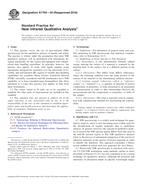
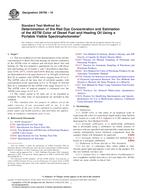 ASTM D6756-10
ASTM D6756-10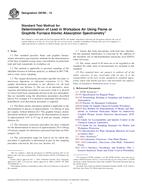 ASTM D6785-13
ASTM D6785-13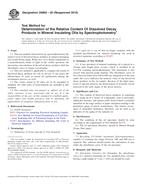 ASTM D6802-02(2010)..
ASTM D6802-02(2010)..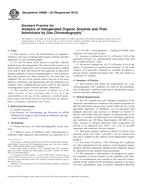 ASTM D6806-02(2012)..
ASTM D6806-02(2012)..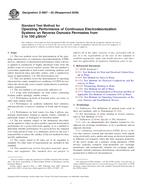 ASTM D6807-02(2009)..
ASTM D6807-02(2009)..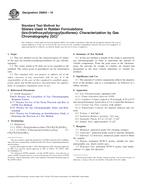 ASTM D6843-10
ASTM D6843-10
 Cookies
Cookies
